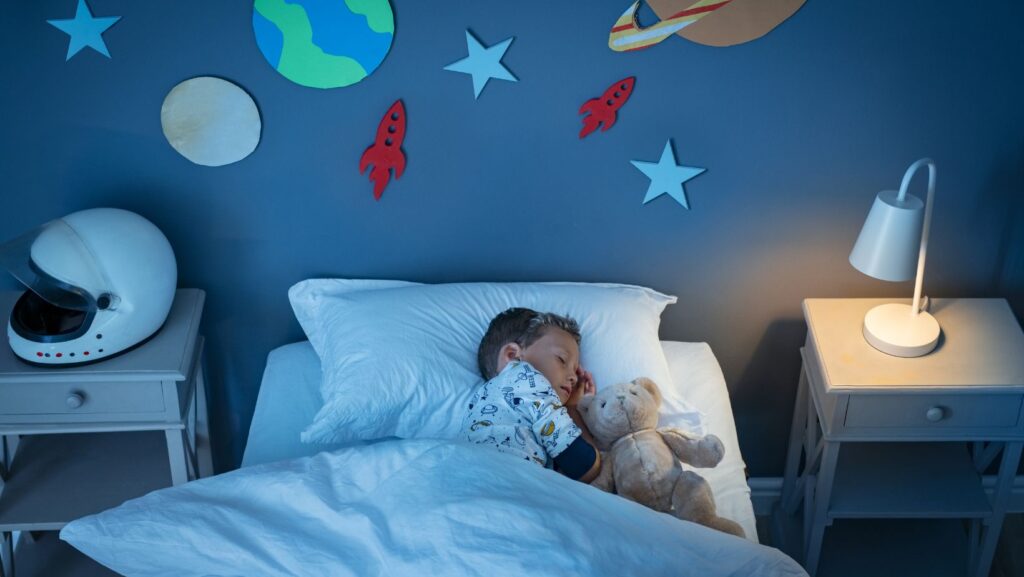Quality sleep is essential for children’s physical growth, emotional well-being, and cognitive development. A good night’s rest doesn’t just leave them feeling refreshed; it helps them learn more effectively, regulate their emotions, and stay healthy. However, with busy family schedules, screen time, and changing routines, it’s easy for sleep to become an afterthought. By introducing a few simple habits at home, you can help your child get the rest they need to thrive.
The Role of a Consistent Sleep Schedule
One of the most effective ways to improve your child’s sleep quality is to maintain a consistent bedtime and wake-up time. Children’s bodies work best when they follow a predictable rhythm, also known as the circadian rhythm. If bedtime shifts too much between weekdays and weekends, it can confuse their internal clock and make falling asleep harder.
A consistent schedule signals to your child’s body that it’s time to wind down, making it easier for them to fall asleep quickly and wake up naturally. Even on weekends, try to keep sleep times within 30 minutes of the usual routine to prevent disrupting their sleep cycle.
Creating a Calming Bedtime Routine
A peaceful bedtime routine acts as a bridge between the day’s activities and a restful night. The routine should be calm, predictable, and enjoyable, helping your child’s mind and body transition into sleep mode. Activities such as reading a book together, listening to soft music, or gentle stretching can create a relaxing atmosphere.
Avoid stimulating activities like video games, exciting TV shows, or vigorous play in the hour before bed. Dim lighting and quiet spaces will encourage the release of melatonin, the hormone that promotes sleepiness.
For more practical strategies, explore this helpful resource on how to improve kids sleep, which offers guidance tailored for families.
Limiting Screen Time Before Bed
The blue light emitted from phones, tablets, and televisions can interfere with melatonin production, making it harder for children to fall asleep.
Encourage alternative quiet activities during this time—puzzles, coloring, or storytelling are excellent options that won’t overstimulate their brains. You could also create a family “tech basket” where all devices are placed before bed, signaling that it’s time to switch off from screens.
Optimizing the Sleep Environment
A child’s bedroom should be a peaceful sanctuary for rest. A comfortable mattress, breathable bedding, and the right room temperature can make a significant difference. Many children sleep best in a cool, dark room with minimal noise.
Blackout curtains can help block light during summer evenings or early mornings, and a white noise machine or soft fan can mask disruptive sounds. Personal touches like a favorite blanket or stuffed animal can also help children feel secure and relaxed.
Encouraging Daytime Activity
Physical activity during the day can help children fall asleep faster and enjoy deeper rest. Outdoor play, sports, or simply walking together after school are great ways to use up energy and reduce restlessness at night.
However, avoid vigorous exercise too close to bedtime, as it can temporarily boost energy levels and make it harder to wind down.
 Mindful Eating and Drinking
Mindful Eating and Drinking
Heavy meals, sugary snacks, or caffeinated drinks in the evening can make it difficult for children to settle. Instead, offer a light snack before bed if needed, such as a banana, yogurt, or wholegrain crackers.
Hydration is important, but too much water close to bedtime may lead to frequent trips to the bathroom during the night, disrupting sleep.
Putting It All Together
Building better sleep habits doesn’t require a complete lifestyle overhaul—small, consistent changes can make a big impact. As a parent, your role is to guide your child toward healthier sleep patterns and help them understand why rest matters.
With these habits in place, they can rest better, wake happier, and approach each day ready to thrive.


 Mindful Eating and Drinking
Mindful Eating and Drinking